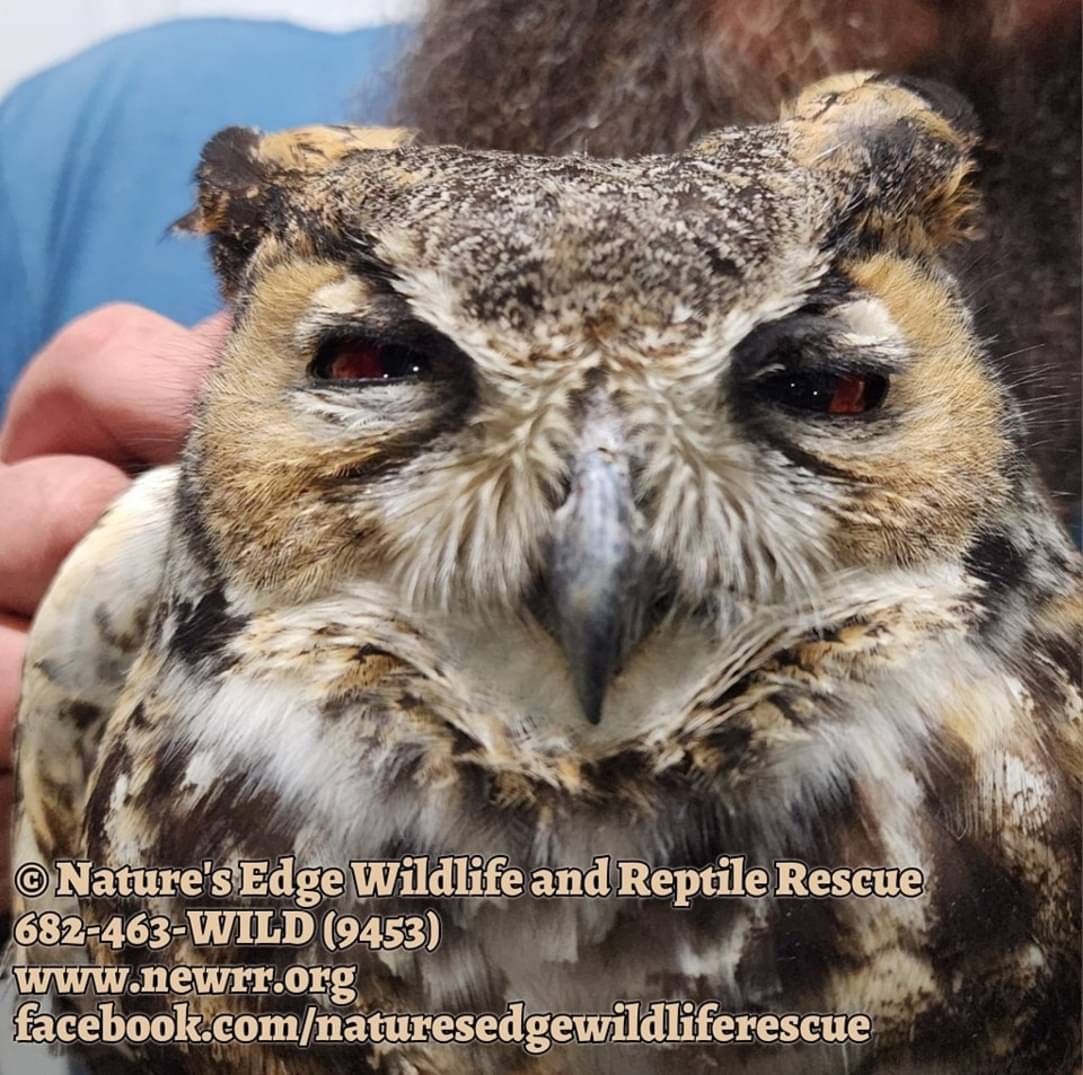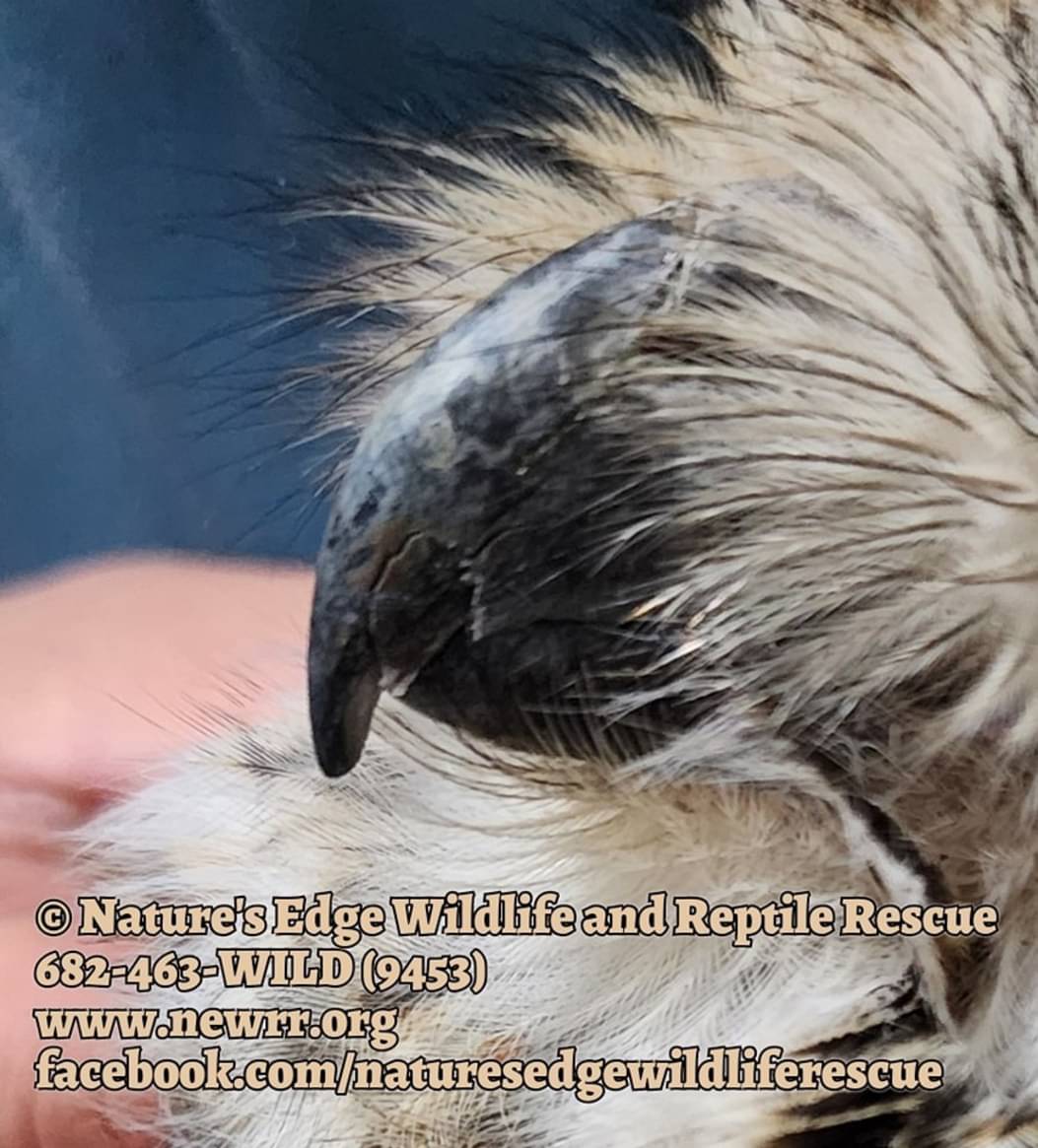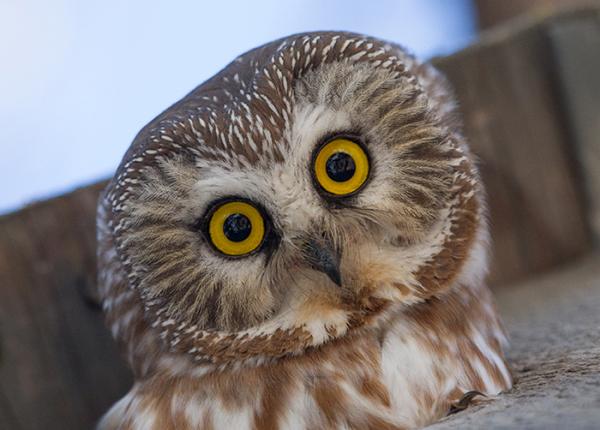Only sharing this for informational purposes because they seem to expect a positive outcome for the owl. I generally avoid anything too serious, as we mainly come here for fun, but I think this is educational.
Due to owl eyes being so huge (each individual eye is often larger than the brain and you can sometimes see the eye through the ear canal) they are often injured during collisions with cars or buildings. I’ve heard this a million times finding things to share with you guys, but I’ve never seen it before finding this.
I wouldn’t call it gory, but it’s definitely not pleasant to see, but after hearing about it so much, it’s helpful to me to have a visual. But don’t click the spoiler tag if you mind blood.
From Nature’s Edge
Took in a found great-horned owl this weekend. It was obvious it had been hit by a car. Both eyes full of blood, beak cracked, one wing badly bruised. Head trauma is concerning. Will take time to see how much damage is done to eyes, but hopeful at this point for a full recovery.
Now to withstand the skunk smell for a few weeks! These guys always come in smelling like their favorite food this time of year.
Final Warning! Injured owl behind the spoiler!




Broken owl. :/
I never thought about beak growth. The internet says that beaks grow throughout life, like fingernails or rhino horns. I learned that today, I never asked myself that before, which makes me think why.
Do you know how long this owl beak will take to heal?
I found 2 guides to coping (trimming the beak) that go into all the details. With a healthy, natural diet and associated eating habits, the beak does a good job maintaining itself. It grows just like a cat or dog’s claws from the sound of things. The beak is worn down to the proper length and shape by pulling apart prey and chomping on bones. There is a “quick” to the beak like a dog or cat’s nails that you need to be cautious of to avoid bleeding and pain. The guides also show pet nail clippers used for rough trimming of the beak.
Being captive animals, their beaks are not used as intensely on food, so they can grow long and cause issues. Some raptors have notched beaks, and when that grows too much can cause cracking. The hook at the end can get way too long, which I’m thinking can also lead to breakage as there’s going to be more leverage on it. Low fat levels can cause flaking of the beak, exposing the skin underneath, so oil can be rubbed on the beak to keep it hydrated.
This guide is pretty short and has good photos of the handling involved.
This guide gives a bit greater detail and some more beak anatomy, so it’s a little harder to read, but not bad, but it also has many before and after pics of trimmed beaks.
The second guide shows a picture of a flaked beak and mentions it will take months to grow out, so I’m picturing the growth rate being about that of fingernails and pet claws as well. Ouch!


